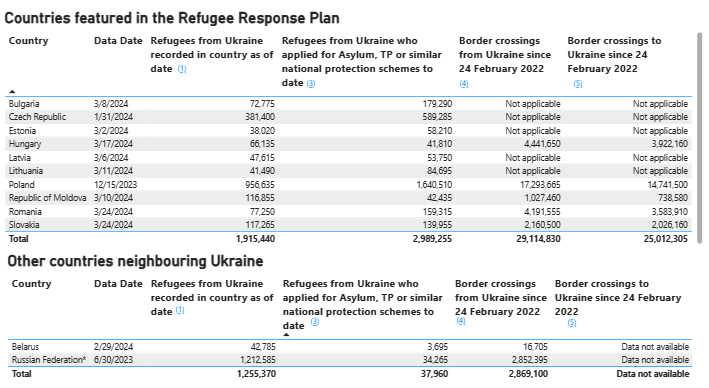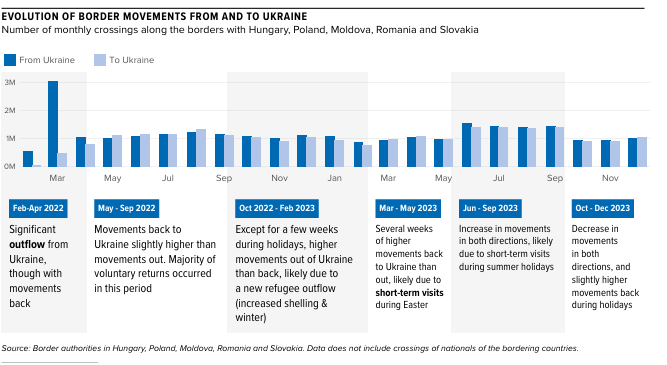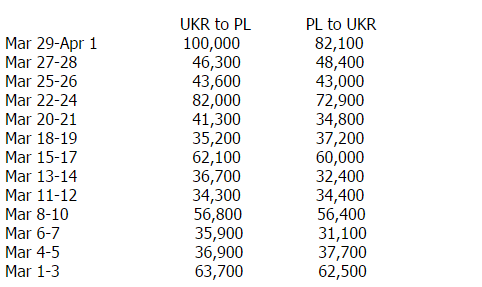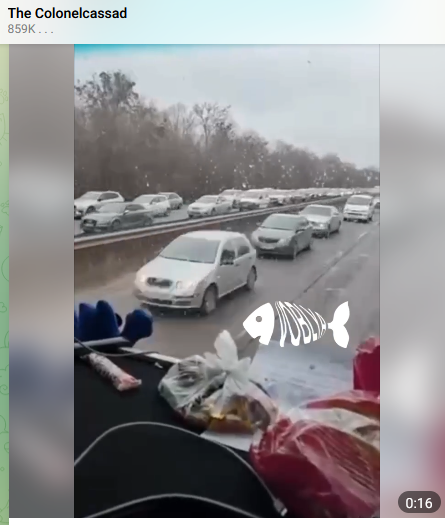Yves here. John Helmer continues to describe how the Russian prosecution of the conflict, and in particular its focus on degrading and selectively destroying electrical supply, is central to what comes soon. As we show in the upcoming Links for today, and YouTubers like Dima at Military Summary, Alexander Mercouris and Alex Christoforu have described in their latest programs, civilians are fleeing Kharkiv, Ukraine’s second-biggest city, due to the lack of power and doubt the lights will go back on any time soon.
As Helmer pointed out in a post we ran yesterday, the West is not prepared for this approach. They are still thinking in terms of Ukraine potentially building fortified lines, which will become irrelevant with Russia already striking all over Ukraine, and the lack of power making military operations well-nigh impossible. How do recharge communications devices? Or operate radars? How about hospitals for treating the wounded? My understanding is most commercial gas stations rely on electricity; only a small proportion have backup generators, which are good only as long as they have fuel to keep them going. I would assume a similar picture exists for military fuel supplies (with presumably more prevalent and bigger generators).
Helmer goes on to say that Russia will keep pushing civilian populations westward with its de-electrification, which would simplify capturing major cities (fewer civilians = more freedom of operation). The resulting movement of refugees into western Ukraine and potentially bordering states will be destabilizing. The Russians see that as a feature, not a bug.
By John Helmer, the longest continuously serving foreign correspondent in Russia, and the only western journalist to direct his own bureau independent of single national or commercial ties. Helmer has also been a professor of political science, and an advisor to government heads in Greece, the United States, and Asia. He is the first and only member of a US presidential administration (Jimmy Carter) to establish himself in Russia. Originally published at Dances with Bears
Go West, young man – that American slogan of the mid-19th century is not an idea the Ukrainian men of Odessa, Kharkov, Dniepropetrovsk, Poltava and Sumy can contemplate today as long as the danger of press ganging into the army in Kiev and Lvov is a higher risk to their lives than staying put in the eastern cities as they collapse.
They must calculate that they are better off trying to do without electricity in the east, and wait for the Kremlin to suspend the campaign – as it did during 2023 – or for the Russian General Staff to pressure the Novorussian cities to surrender to Russian control, when the Ukrainian men will be filtered but keep their lives.
The women and children, however, are evacuating from Sumy and Kharkov.* The displacement of these easterners to the west, from Kiev to Lvov, is not yet being reported by the United Nations High Commissioner for Refugees (UNHCR) which publishes its Ukrainian population movement data in the third week of each month.
At the end of December, the total number of internal refugees or internally displaced persons (IDP) in the bureaucratic records, was 3.7 million. This number is increasing sharply now, but the UNCHR reports are lagging by four weeks, and there are no reliable real-time figures available.
The Polish Border Guard, however, is reporting every two days the movement of Ukrainians into Poland and their reverse movement from Poland into the Ukraine. A surge out of the Ukraine, like that of the first months of the Special Military Operation in 2022, is not yet visible in the Polish data.
In the Border Guard twitter reports for the month of March, there were big surges on March 1-3, March 8-10, March 18-19, March 22-24, and March 29-April 1. The timing reflects the weekends, and the flows out of the Ukraine into Poland were equally balanced by the numbers returning. That is, until March 22-24 when the electric war began in earnest, and 82,000 Ukrainians crossed into Poland, while only 72,900 returned. Over the Catholic Easter weekend of March 29-April 1, 108,000 moved into Poland; only 82,100 came back.
The difference of 26,000 were not Easter pilgrims or holidaymakers. This the largest recorded at the Polish-Ukrainian border since 2022 – it is the beginning of a new Ukrainian surge out of the country into Europe.
Sources in Warsaw say there is “attention fatigue” towards the refugees on the part of the Poles. “There is nothing new in the local media on the flows of Ukrainians. No longer topic of interest. The new Polish government plans allegedly to tighten financial rules for Ukrainian refugees in order to cut welfare costs and combat “the pathologies that currently exist.”
The Polish press reported late last week that “the most important change concerns the financing of refugees’ stay. The government intends to abolish the system that currently subsidizes the stay of refugees from Ukraine (PLN 40 [$10] per day per person) in small guesthouses where up to ten people live. Revolutionary changes for newcomers from Ukraine, especially those who benefit from free food and accommodation, are to be included in the draft amendment to the special act, which came into force two years ago.”
Moscow sources believe the operational plan of the General Staff, agreed by the Kremlin since last month’s election, is to depopulate Kharkov and the surrounding region north to Sumy, and press equally hard in the centre (Dniepropetrovsk) and the south (Odessa). For maps of the campaign so far, click.
According to a Moscow source, debate over operational priorities in the political and military strategy is muted. “This time round,” the source believes, “the General Staff aims not to suspend the attacks, not to relieve the pace, so that the Ukrainian utilities cannot repair or restore power supplies — no repeat of the first phase of the electric war which stopped at the end of 2022.”
For the first phase of the electric war in 2022, read this.
A western military source thinks the impact in the west, especially in the western region of Galicia around Lvov which is the historic centre of Ukrainian fascism, will be chaotic and violent between the established, well-off westerners and the incoming poorer easterners. “Another mass in-migration to Kiev and west won’t go over well when rent extortion meets fuel shortages high power tariffs, fuel shortages, outrageous grocery prices, then even wilder power tariffs in the midst of outages. This is when ‘the master race’ will forget all their ‘European civilization’ slogans, and start killing each other over a litre of gasoline. Is Russian intelligence factoring this into their strategy? Sure.”
The United Nations High Commissioner for Refugees (UNCR) publishes regular data updates on the movement of Ukrainians within the country, moving westward from the line of contact, and the exodus of Ukrainians across the Polish, Slovakian, Moldovan, and Romanian borders.
UKRAINIAN POPULATION MOVEMENT, CROSS-BORDER & INTERNAL DISPLACEMENT, TOTALS

As of last month, the Ukrainian refugee flows over the borders look like this, with Russia topping the list of destination countries, followed by Poland, the Czech Republic, Slovakia, and Moldova.

Source: https://data.unhcr.org/en/situations/ukraine -- flash updates are published monthly at the mid-month
Charting the Ukrainian population movements over time, this is the picture, with UNCHR commentary.

Source: https://data.unhcr.org/
According to data published by EUROSTAT, between January and December 2023, over 1,032,000 Ukrainians were granted Temporary Protection (TP) in the European Union area. While this number was lower than in 2022, decisions granting temporary protection were l averaging more than 87,000 per month in the European states through the end of 2023, although on a decreasing trend.
The shift of Russian operational priorities and tactics on the five main directions along the line of contact (Kupyansk, Donetsk, Avdeyevka, South Donetsk, and Kherson), the Battle of Bakhmut, and the clearing of the four new Donbass regions (Donetsk, Lugansk, Kherson, Zaporozhye), relieved the pressure on the electricity-generating plants and the power grid during 2023. This in turn cut the internal and cross-border population flows.
In real time the best indicator of Ukrainian population movements is the daily Twitter stream of the Polish Border Guard (Straż Graniczna, SG). Here is the tabulation of SG reports for the month of March. The surge over the Easter weekend reveals the largest “gap” between outgoing and incoming movements since the first phase of the electric war in October 2022.
UKRAINIAN MOVEMENTS ACROSS THE POLISH BORDER, MARCH 2024

Source https://twitter.com/Straz_Graniczna
An unofficial Moscow source comments: “For the time being, the campaign is likely to leave enough lights on in Lvov to lure the displaced easterners there, and generate all sorts of communal friction. The westward process will repeat itself until Lvov and other border areas are huge refugee camps facing a bunch of nervous Poles, Romanians, Moldovans, etc. We’ll see what happens to Euro solidarity then.”
[*] In a videoclip Boris Rozhin republished yesterday morning (April 2), evacuating residents of Kharkov can be seen stalled in a traffic jam on three lanes while some drivers are so desperate to escape they are driving on the reverse-direction side of the highway.



